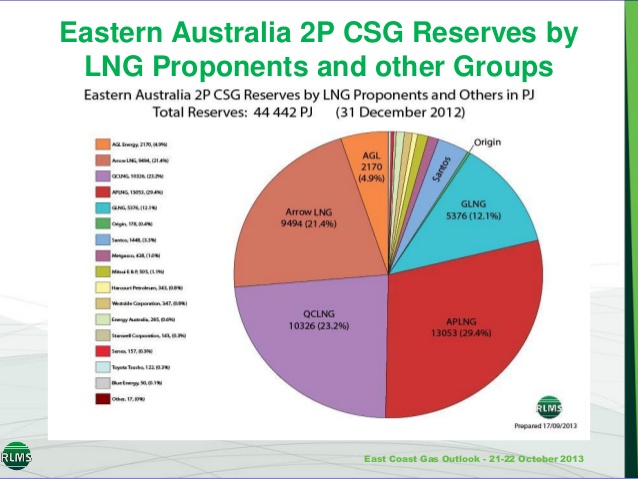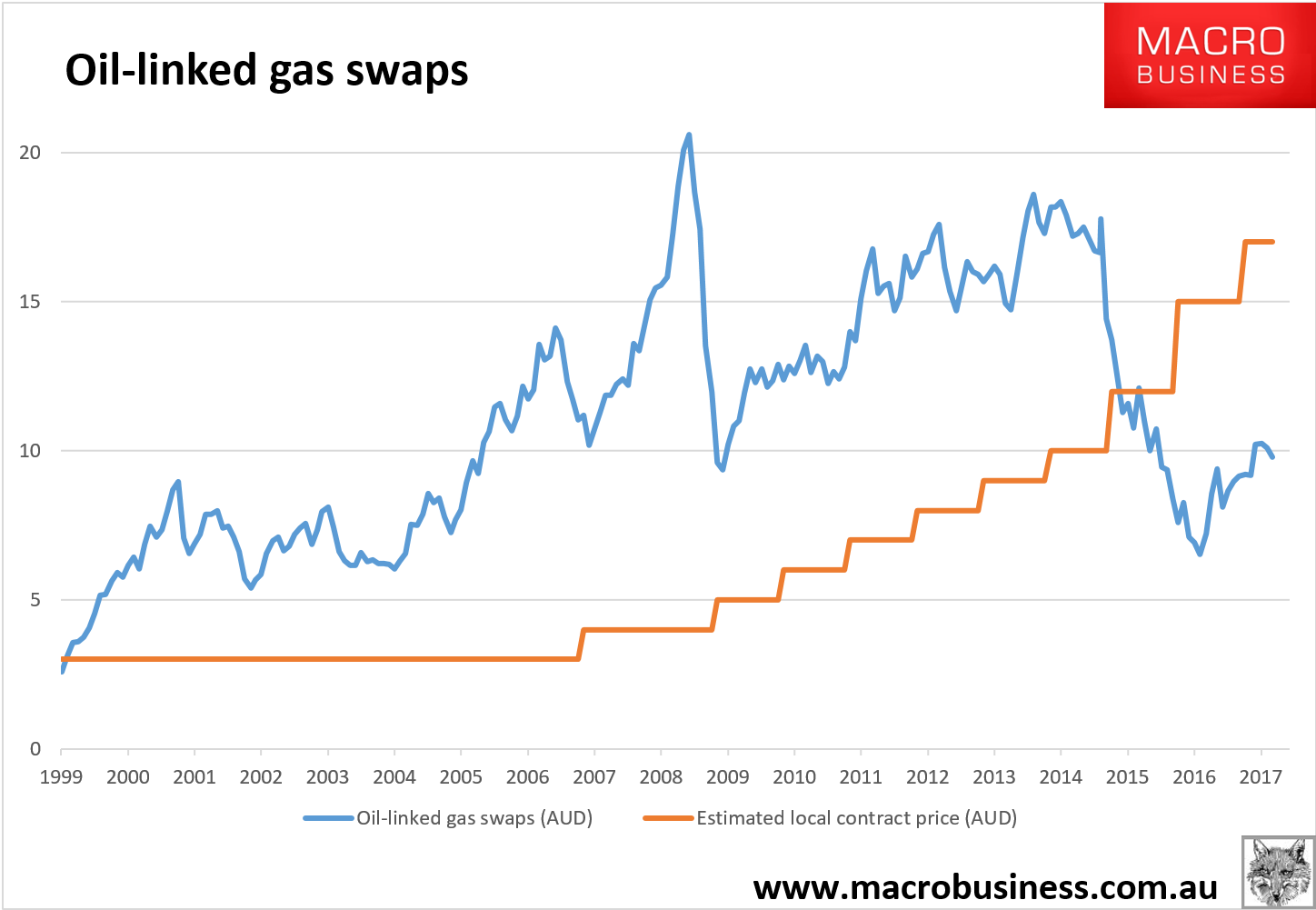From The Australian:
The Business Council of Australia yesterday attacked the Victorian government for lacking “political courage’’ to develop its gas reserves and implicitly criticised the NSW government, which has imposed restrictions through much of the state.
…Ahead of next month’s budget, the government last night shelved potentially-explosive recommendations from a review of the Petroleum Resource Rent Tax. The review recommends changes to the generous tax deductions for exploration and other spending under the PRRT.
However, Scott Morrison said the government would seek consultation with the industry to ensure any changes do not discourage investment.
…Mr Turnbull defended his government’s move on the gas industry yesterday as “temporary’’ and “a short-term solution to a longer-term problem’’.
He said the government would be open to using the $5bn Northern Australia Infrastructure Fund to back a gas pipeline from Queensland’s Galilee Basin to the east coast network if a suitable proposal was put before it.
Resources Minister Matt Canavan said if substantial gas reserves, such as the $3.6bn NSW Narrabri project being developed by Santos, could be fast-tracked, the security mechanism may only be needed for the next three years.
He also said the commonwealth would seek states’ agreement through the Council of Australian Governments to introduce new “use it or lose it” provisions for companies sitting on acreages containing potential gas reserves that could be developed.
According to APPEA, undeveloped gas reserves in NSW and Victoria of a prospective 113,000 petajoules would be enough to supply the entire east coast domestic market for about 200 years.
Good to see the interests squealing like stuck pigs. Morrison should not have shelved the PRRT reforms on this very basis. Treat ’em mean to keep ’em keen. At least the ATO has lifted its take from Chevron.
The rest of the ideas are good. The “use it or lose it” provisions are aimed at QLD, especially and Shell’s huge Arrow reserves:

There’s enough gas there to service the east coast for 15-20 years. The Galilee pipeline proposal is also aimed at helping free this up. It might also provide some competition to APA, the great pipeline monopoly gouger. The QLD government has every incentive to agree so I can’t see why this would not get done.
Assuming it is structured right, Shell will be forced to develop Arrow or divest to someone who will.
As for the southern states and the 200 years claim, it would be good to see more development, especially in far-flung Narrabri and perhaps in Victoria’s Otway basin. But the VIC reserves are still unproven so this largely lobbying balderdash in terms of magnitude.
As for electricity prices, Reneweconomy has a solid comment:
This announcement is sufficiently vague it’s hard to measure its impact. We don’t know what its triggers will be. On one view it’s only when there is a physical shortfall in the market, and that won’t be for a few years if at all.
However, it clearly increases risks and pressures on the exporters. Note that the exporters essentially include the Chinese and Malaysian Governments and they won’t be happy about rules being changed halfway into “the game”.
As the background analysis below discusses, all of the LNG exporters have some residual concerns about their reserve adequacy, but GLNG has a clear problem and has had it for years.
We expect that in the end if push comes to shove all that will happen is that than an exporter (GLNG by far the most likely) will just purchase LNG on the spot market to fulfill its contracts and divert the gas it would have used back into the domestic market.
As there is no suggestion of price limitation, we expect that the domestic price of gas will continue to trade at around export parity.
We do not see this policy as impacting much on the relative merits of building new gas fired generation except to say that if the country needs Government regulations to stop us running out of gas given existing demand, it’s hard to see new gas fired power stations being built in the near future.
Export parity would be a great improvement, for contracts, falling from $15-20 to $9.70Gj today:

But we should be aiming for better, at minimum, export net back, another $2 lower.
We don’t need a whole lot more gas electricity investment. We just need cheaper gas to free up the generation that’s already there. Although a carbon price would be much better, RETs will drive ongoing renewable investment and in five more years (MB estimates) the killer app of renewable/battery power will be competitive anyway.
As Mark Kenny says today:
The industry had become its own worst enemy, refusing to give ground and spectacularly failing to understand that the domestic gas market is not merely a market; it exists within a polity, a community, a nation.
“It is unacceptable for Australia to become the world’s largest exporter of liquefied natural gas, but not have enough domestic supply for Australian households and businesses,” Turnbull said on Thursday, for the umpteenth time.
Gas executives weren’t listening. They are now.
For companies which trade in invisible substances, they had proved amazingly blind to the obvious political realities before them.
Damn right. The Banana Republic is biting back, following the MB script.

